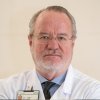Would you like to request an early diagnosis of lung cancer or would you like to contact our team of professionals?
WHY PERFORM THE LUNG CANCER DIAGNOSIS AT BARNACLÍNIC+?

EXPERIENCE
Our team of professionals has extensive experience in the diagnosis, treatment and follow-up of lung cancer.

RESEARCH
Some of the leading clinical studies on the early diagnosis of lung cancer have relied on our experts and/or have been led from the Hospital Clínic de Barcelona.

CUTTING-EDGE TECHNOLOGY
For the early detection of lung cancer, we use the latest technology available within the Hospital Clínic de Barcelona Group. Diagnostic imaging tests are quick and painless, and offer the greatest precision in the shortest time.

MULTIDISCIPLINARY TEAM
The team responsible for lung cancer screening is made up of professionals from different disciplines who work together to offer a better service. Specialists in pulmonology, thoracic surgery, medical oncology, radiology and nuclear medicine are at your service to offer the best possible diagnosis and treatment of lung cancer.

PERSONALISED TREATMENT
Should any abnormality be found in the lung cancer detection tests, the treatment would be implemented immediately. At barnaclínic+, we have well-defined protocols for each type of tumour. A multidisciplinary treatment plan that combines surgery, chemotherapy and/or radiation therapy, depending on the case. In addition, our team includes experts in smoking cessation to help smokers to kick their habit. Finally, it should be noted that our surgical team has the best results in terms of long-term survival and post-surgical complication rates.
WHO SHOULD BE SCREENED FOR LUNG CANCER?
The type of person who should consider early screening for lung cancer is:
· Smoker over 40 years old
· Smoker or former smoker who has stopped smoking in the last 15 years
· Anyone diagnosed with emphysema and/or abnormal lung function
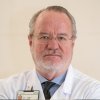
"Lung cancer is curable. To do so, it needs to be diagnosed in the early stages of the disease, when it can be surgically removed. Unfortunately, this only happens in a small minority of patients as, in the early stages, lung cancer is mostly asymptomatic"
Dr. Àlvar Agustí
WHAT DOES THE EARLY DIAGNOSIS OF LUNG CANCER CONSIST OF?
The early diagnosis of lung cancer, which is valid for 2-3 years, consists of a series of tests to detect any malignant nodules in the lungs early. The diagnostic process begins with a visit to the pulmonologist, followed by a series of tests for respiratory function and a low-intensity chest CT scan.
In the low-dose CT, up to 40% of smokers present with benign nodules. In light of this, a follow-up visit will be scheduled at 3/6 months, where another CT scan may be performed. After 2 years, a new visit and a control CT scan will be scheduled.
In the case of active smokers, the same process will be followed and the smoking cessation programme will start immediately. If, at some point in the process, lung cancer is detected, the most appropriate oncological treatment will be implemented (surgery, chemotherapy, immunotherapy, radiation therapy).

PHASE 1
- Appointment with the pulmonologist
- Tests for respiratory function
- Low-dose chest CT scan
- Follow-up visit

PHASE 2 (AFTER 2 YEARS)
- Appointment with the pulmonologist
- Tests for respiratory function
- 2nd low-dose chest CT scan
LUNG CANCER DETECTION TESTS
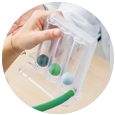
TESTS FOR RESPIRATORY FUNCTION
The main test for respiratory function in the early diagnosis of lung cancer is spirometry. This test allows respiratory system disorders to be detected. Depending on the patient, a plethysmography, a lung diffusion test, a walk test or a stress test may also be required.
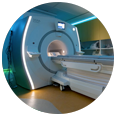
LOW-DOSE CHEST CT SCAN
A Chest CT scan is a type of imaging test that generates multiple cross-sectional images of the chest using X-rays. A low-dose CT scan offers high-resolution images and, therefore, greater precision in diagnosing nodules in the lung, using 90% less radiation than a conventional chest CT scan.
Do you need medical advice on the early diagnosis of lung cancer but you are not in Barcelona or you cannot travel? If you wish, our professionals will meet you via video conference, without your having to leave your home.
EARLY DIAGNOSIS OF LUNG CANCER IN FIGURES
· Every year, more than 23,000 people are diagnosed with lung cancer
· The main cause of lung cancer is tobacco, with 95% of patients being smokers or ex-smokers
· Currently, only 15% of people diagnosed with lung cancer survive at five years
· 75% of patients diagnosed with lung cancer have advanced stage disease
· The early diagnosis of lung cancer with a low-dose CT scan allows lung cancer to be diagnosed in its early stages, early treatment to be proposed and 10-year mortality to be reduced by 26% in men and 61% in women
· Patients diagnosed with early-stage lung cancer have an 85% survival rate at 5 years, compared to an overall survival rate for lung cancer of around 15%
· 40% of smokers or ex-smokers present with benign pulmonary nodules on a chest CT scan
TREATMENT OF LUNG CANCER
- Prevention and smoking cessation
- Lung cancer surgery
- Chemotherapy
- Radiation therapy
Experts in the early diagnosis of lung cancer
BLOG (spanish)
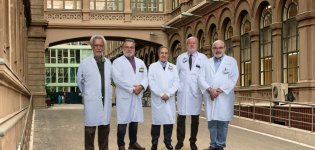
Cinco profesionales de barnaclínic+ entre los mejores investigadores del mundo
Cinco profesionales de barnaclínic+ han sido reconocidos en la prestigiosa lista de «Highly Cited Researchers» de Clarivate Analytics. Este ranking identifica a los mejores investigadores del mundo, los expertos más influyentes, situados entre el 1 % más citado de su especialidad a nivel mundial desde el año 2021. Los doctores Francesc Graus, Eduard Vieta, Josep […]

Nueve servicios del Clínic entre los mejores del mundo en la ‘World’s Best Specialized Hospitals’ de 2023
La revista Newsweek en colaboración con el portal de estadística Statista Inc. publican cada año un ranking de los mejores hospitales del mundo por especialidad, el ‘World’s Best Specialized Hospitals 2023’. Como viene siendo habitual, el Grupo Clínic Barcelona se ha destacado como uno de los mejores hospitales del mundo y de nuestro país, y […]

Nueva oferta de diagnóstico de la COVID-19 y de sus posibles secuelas
En la fase de desescalada de la pandemia por COVID-19 en que nos encontramos está siendo y va ser fundamental el correcto diagnóstico de la enfermedad. Además, va a ser de suma importancia la identificación de aquellas personas que la han pasado y sus posibles secuelas. Por este motivo, en barnaclínic+ hemos diseñado varios protocolos […]


